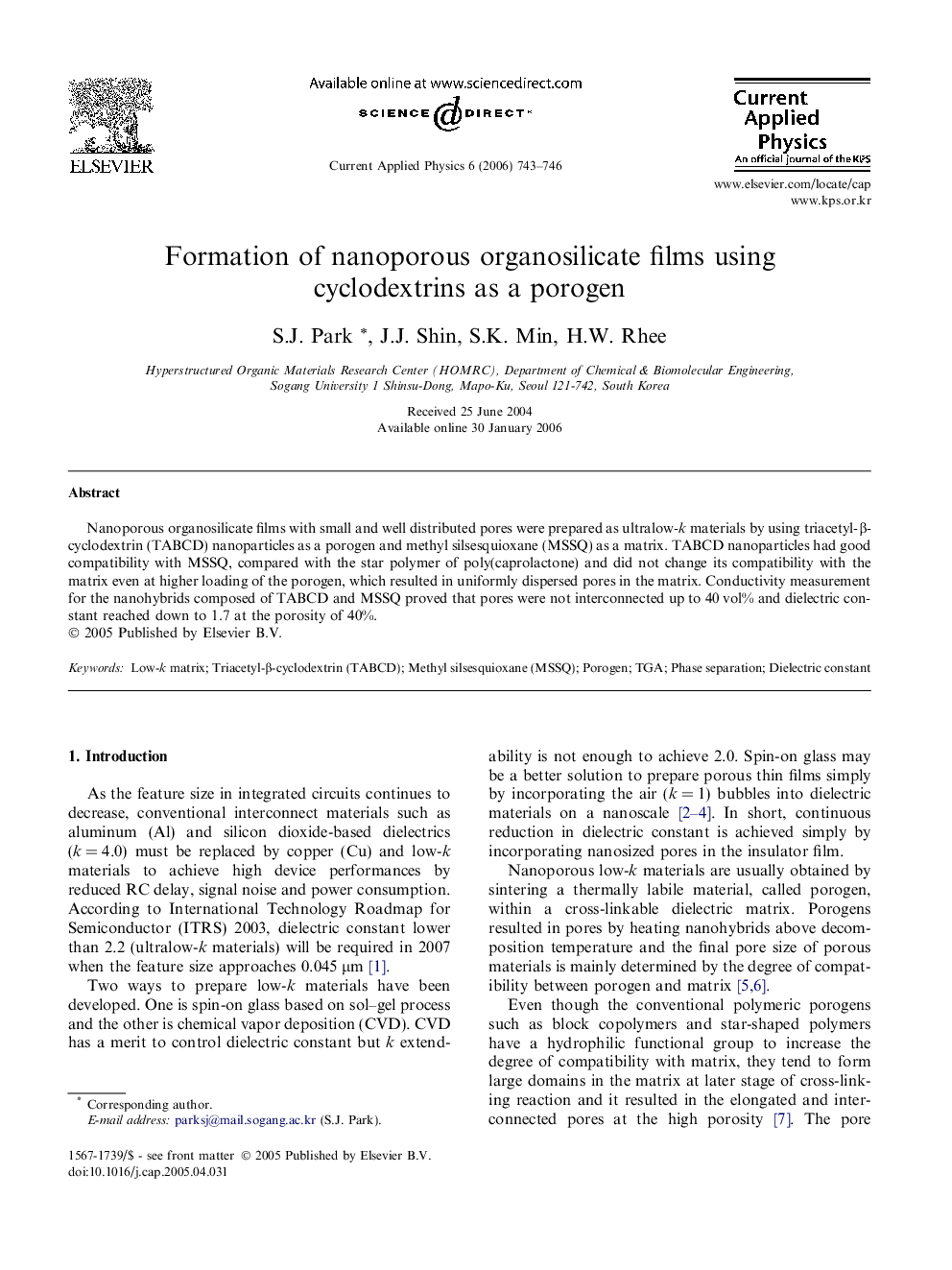| Article ID | Journal | Published Year | Pages | File Type |
|---|---|---|---|---|
| 1789198 | Current Applied Physics | 2006 | 4 Pages |
Abstract
Nanoporous organosilicate films with small and well distributed pores were prepared as ultralow-k materials by using triacetyl-β-cyclodextrin (TABCD) nanoparticles as a porogen and methyl silsesquioxane (MSSQ) as a matrix. TABCD nanoparticles had good compatibility with MSSQ, compared with the star polymer of poly(caprolactone) and did not change its compatibility with the matrix even at higher loading of the porogen, which resulted in uniformly dispersed pores in the matrix. Conductivity measurement for the nanohybrids composed of TABCD and MSSQ proved that pores were not interconnected up to 40 vol% and dielectric constant reached down to 1.7 at the porosity of 40%.
Related Topics
Physical Sciences and Engineering
Physics and Astronomy
Condensed Matter Physics
Authors
S.J. Park, J.J. Shin, S.K. Min, H.W. Rhee,
